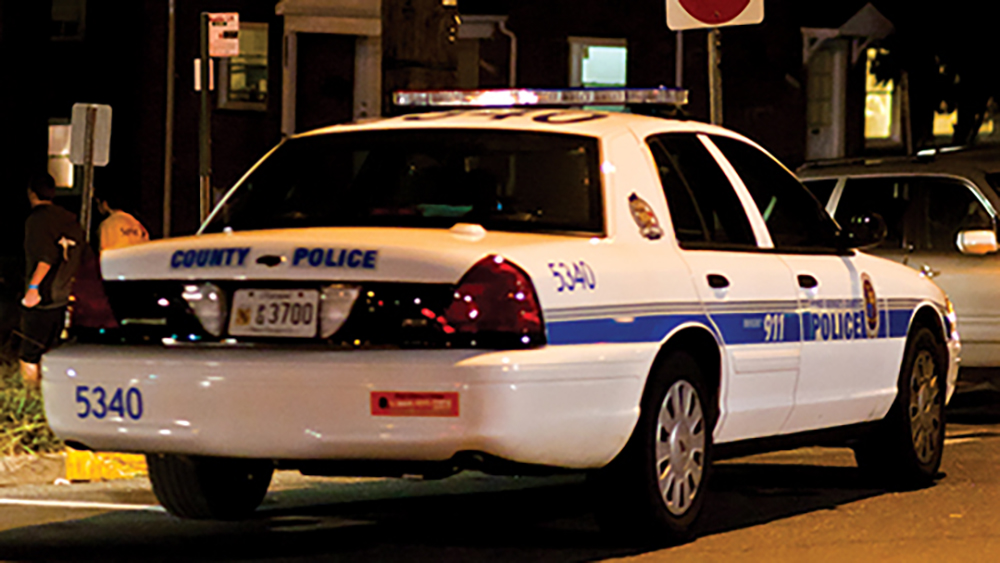Views expressed in opinion columns are the author’s own.
The enforcement of mandatory bedtimes is not only an incredibly silly way to try and fight crime, but it’s also an actively harmful practice Prince George’s County needs to leave in the past. With a reported regional uptick in crime, particularly carjacking, Prince George’s County Executive Angela Alsobrooks announced an enforced curfew for teens under 17 years old in an attempt to curb teen crime that has them off of the streets from 10 p.m. to 5 a.m. Sundays through Thursdays and 11:59 p.m. to 5 a.m. on Fridays and Saturdays. Kids and their parents face civil penalties and fines for noncompliance.
This draconian measure is an overreaction predicated on false myths. A curfew will only contribute to a perniciously false narrative surrounding juvenile crime, strain youth-police relations and avoid the systemic problem altogether.
Alsobrooks pointed to an “eye-popping” 430 juvenile arrests this year, which almost doubles the figure of last year. However, a look at the pre-COVID-19 pandemic numbers finds juvenile arrests have fallen from more than 4,000 in 2010 to 931 in 2017, 865 in 2018 and 1,021 in 2019 — the three lowest juvenile arrest numbers of the time period.
Of course, that data isn’t a justification for any sort of crime, but it does contextualize the fact that the juvenile crime “spike” is much more likely an effect of decreased restrictions surrounding COVID-19.
Further misinterpretation, if not total ignorance, of data is a common theme surrounding the implementation of curfews throughout history. The ACLU found a Minneapolis curfew targeted children of color at a prolific rate. Forty percent of low-level arrests were curfew violations, far outpacing any other violations. Of those arrests, 56 percent were Black teens, and 17 percent were white teens — 30 percent and 40 percent of the population, respectively. One particularly horrifying statistic is that of the 33 children under 10 years old arrested for curfew violations during the study period, 28 were kids of color. Racial profiling, unsurprisingly, finds its way into the enforcement of a policy that requires police officers to detain kids that they deem look out of place.
Furthermore, the National Research Council of The National Academies found that bringing youth into the criminal justice system does not eliminate criminal behavior. These children and families who have run-ins with the law have only been hurt by curfews in the long term.
After all, I would spite the police with particular venom if they arrested my 10-year-old child or sibling for existing outside, wouldn’t you?
Furthermore, there have been studies done specifically in Prince George’s County over this exact curfew. Because the curfew has been technically on the books since 1995 but selectively enforced, a 2000 study conducted by The Urban Institute found any effect of the curfew on crime was statistically insignificant. Policies with insignificant results, such as this curfew, are less than a band-aid on a bullet hole; they are counterproductive, non-solutions that waste resources that could be utilized more effectively elsewhere.
The solution is plain and simple: Listen to the numbers and the lived experience of people. When Prince George’s County Council President Calvin Hawkins said, “Somebody has to ask the question: Who is allowing these individuals to return to our streets,” there was a fundamental misunderstanding. The problem is not that kids aren’t being thrown into the prison-industrial complex at a high enough rate, the problem is they are being returned right into the conditions that led them there in the first place. When Hawkins himself said he’s a “second-chance kind of guy” after six years in prison for armed robbery, there is a gross hypocrisy in him calling for today’s youth to be kept shackled without providing more resources.
Earlier in June, Prince George’s County was celebrating a noticeable drop in homicides and violent crime. The celebration came around an event held by attorney Aisha Braveboy that also connected locals with job opportunities. That event was seen by many as a positive way to fight crime.
Why are policymakers abandoning that approach? Child care has become expensive and scarce after licensing failures in Prince George’s County Schools. Other studies show programs in Los Angeles have “statistically and substantively positive effects on youth crime abatement” while also saving money through avoiding damages from juvenile crime. When examining these cases, the root cause and solution of crime is glaringly obvious.
Kids in Prince George’s County are not being given enough resources or guidance to prevent them from falling into recidivist patterns. By funding child care and after school programs, crime will drop as the quality of our youth’s lives rises. Fostering connections is a far more humane, cost-effective and constructive method of reducing delinquency than throwing the book at every teenager caught venturing to McDonald’s at 10:30 p.m.
Curfews are worse than ridiculous; they are injurious to the morale, integrity and soul of our community. Ultimately, they erode community belief in institutions, target marginalized groups and erode quintessential American autonomy.
After years of uncertainty and tumultuousness, casting the next generation and their needs aside is a great way to tank efforts to reconstruct a stable and healthy society. Today’s kids need compassion, guidance and human interaction through school-oriented programs and child care.
There is no reason to expect them to abide by a mandatory bedtime if the daytime gives them nothing to dream about.
Rohin Mishra is a sophomore government and economics major. He can be reached at rohinpmishra@gmail.com.



